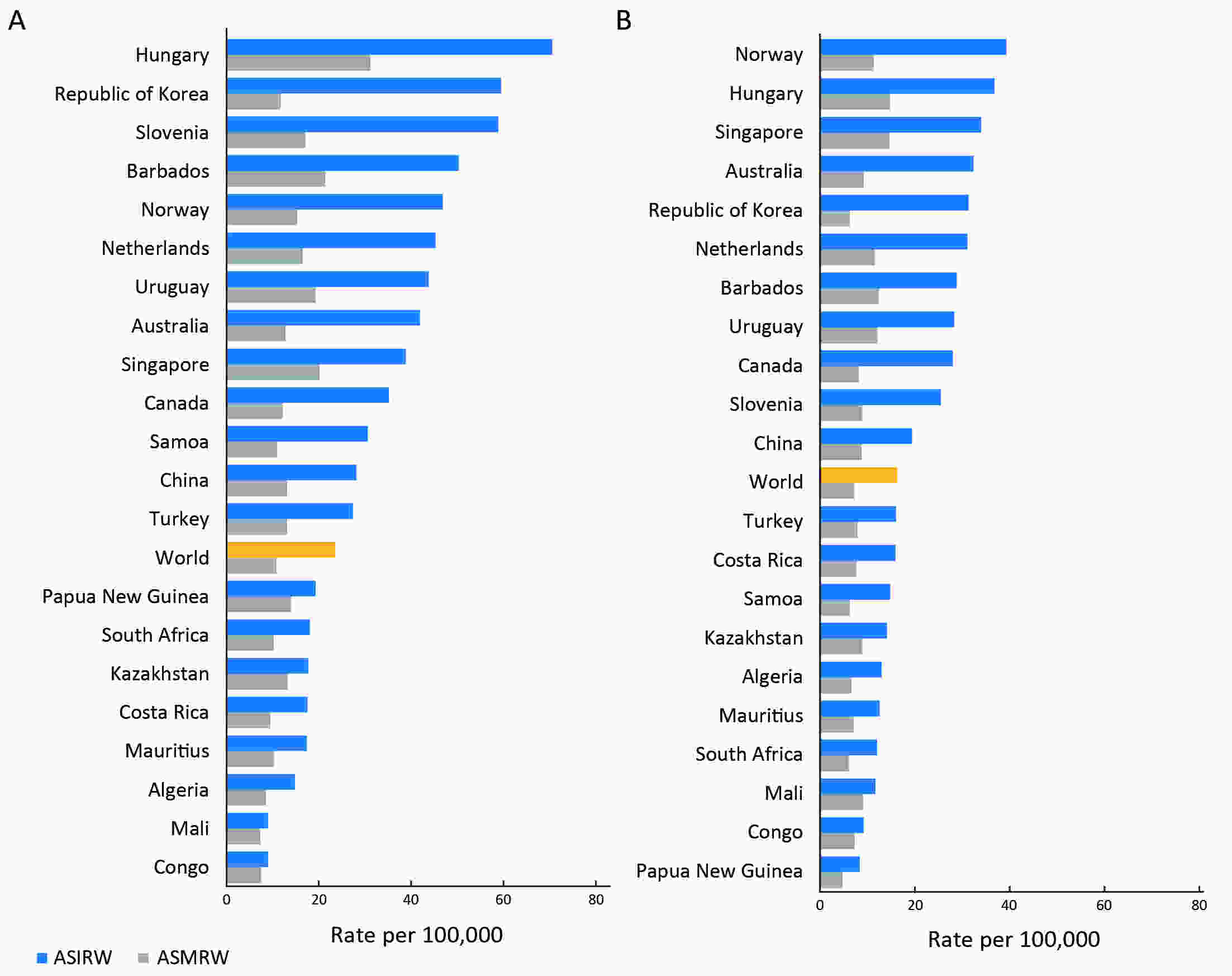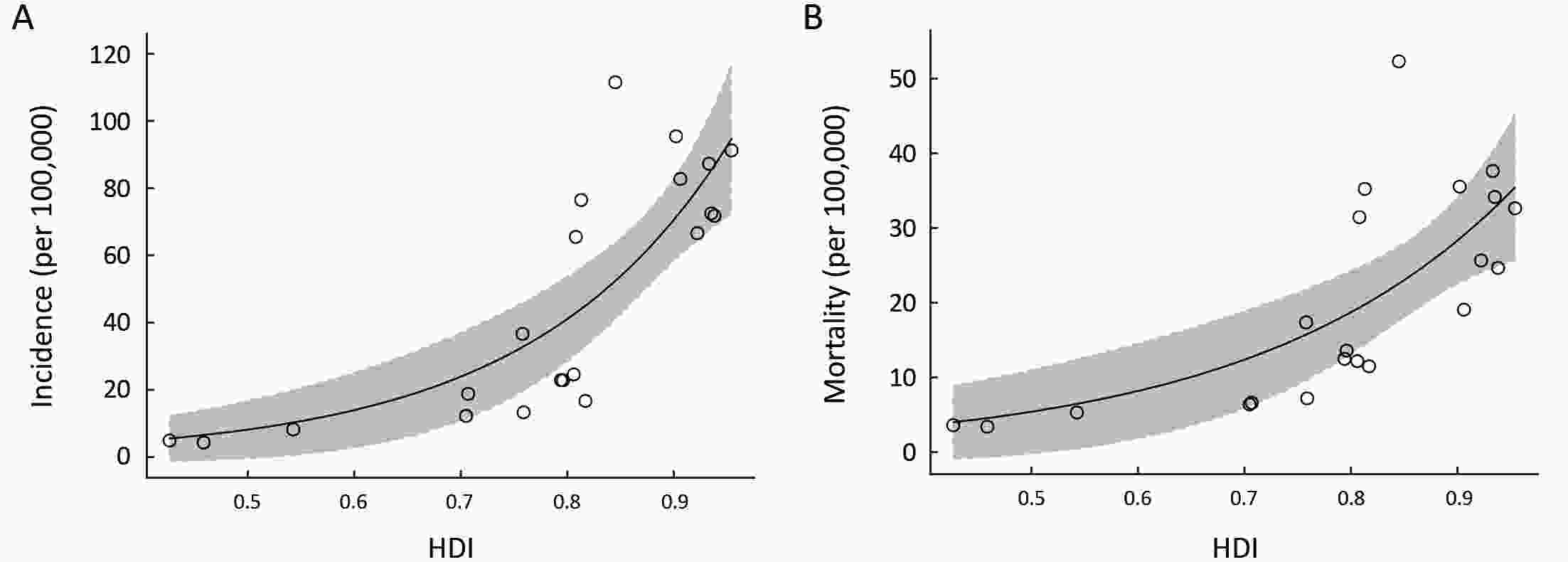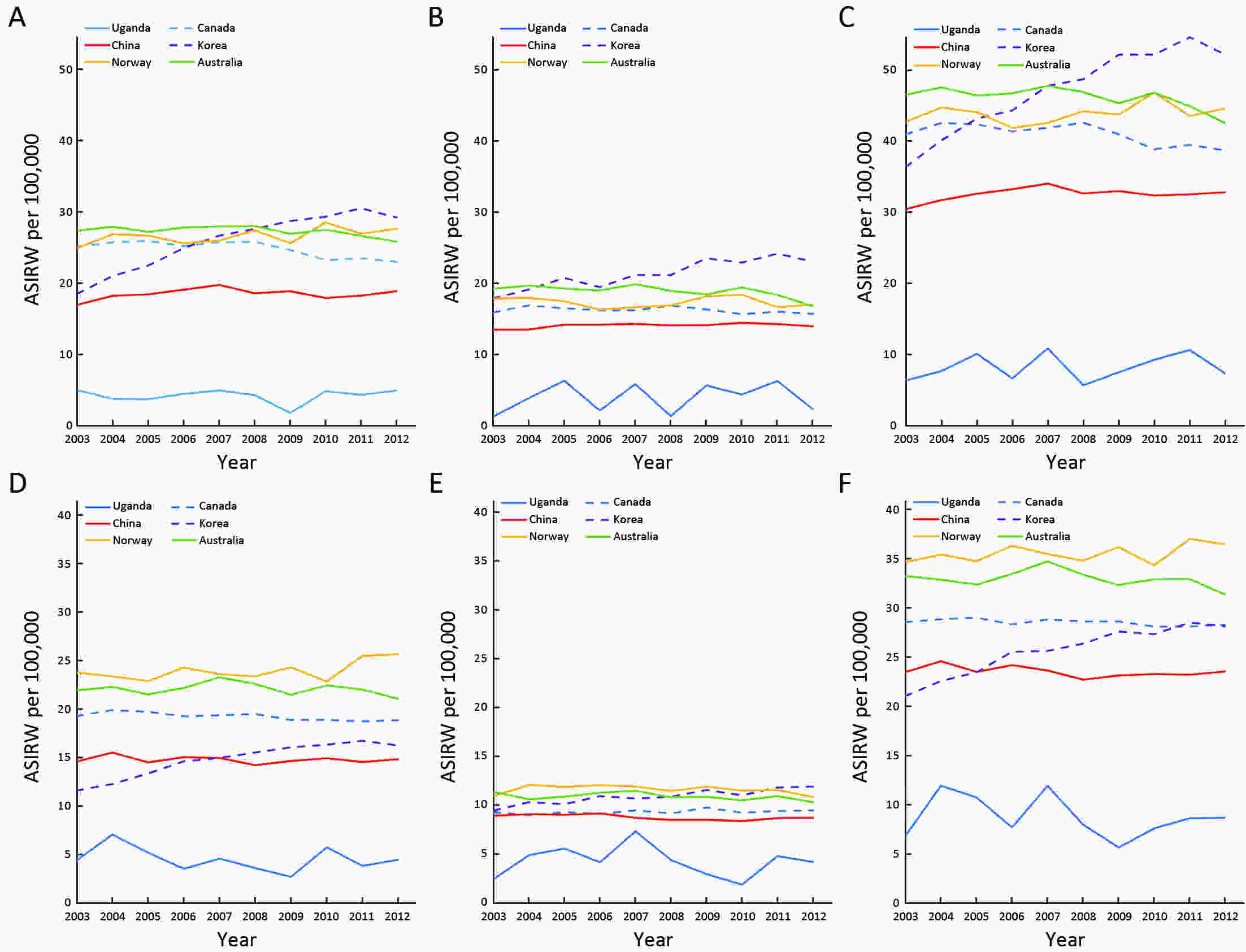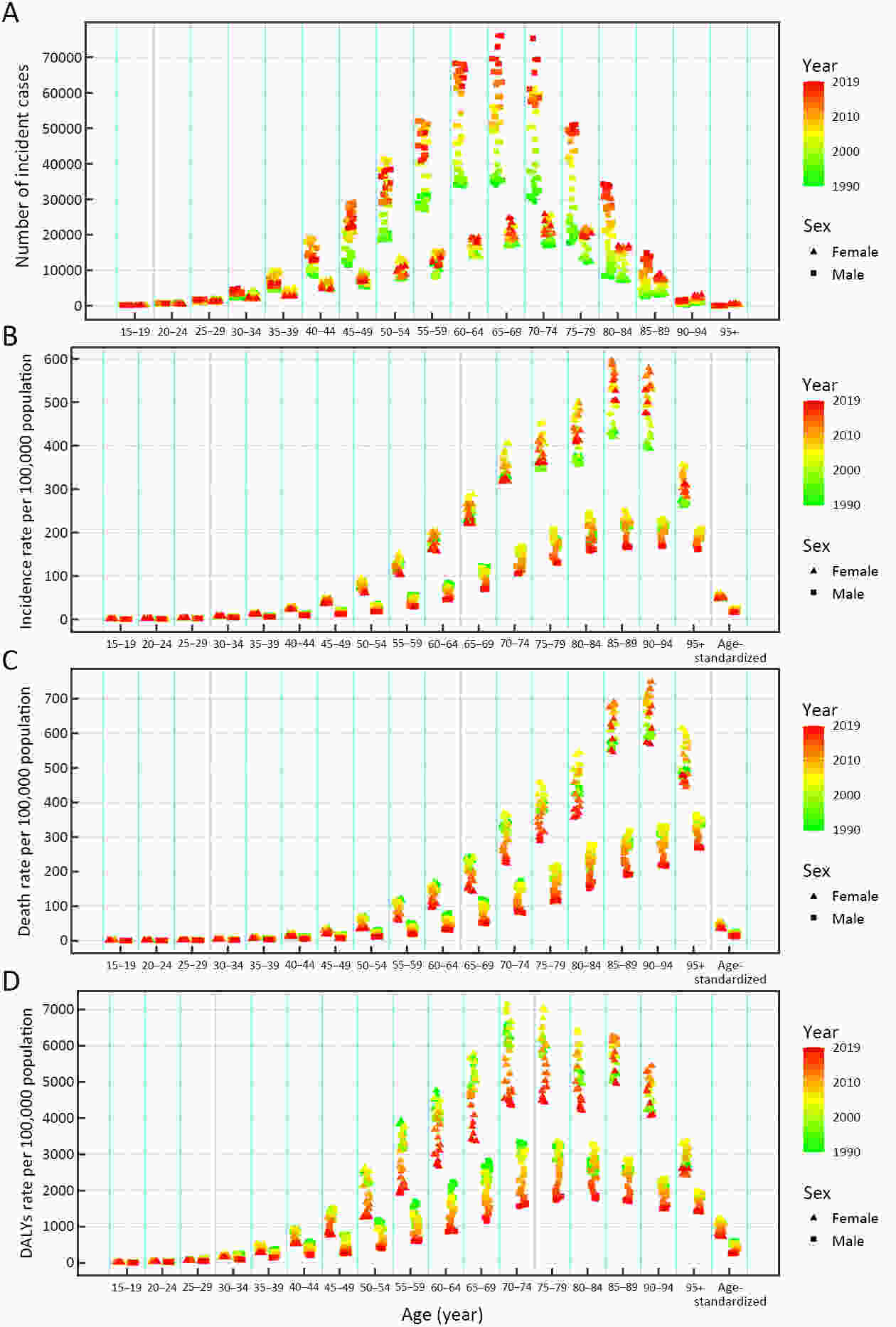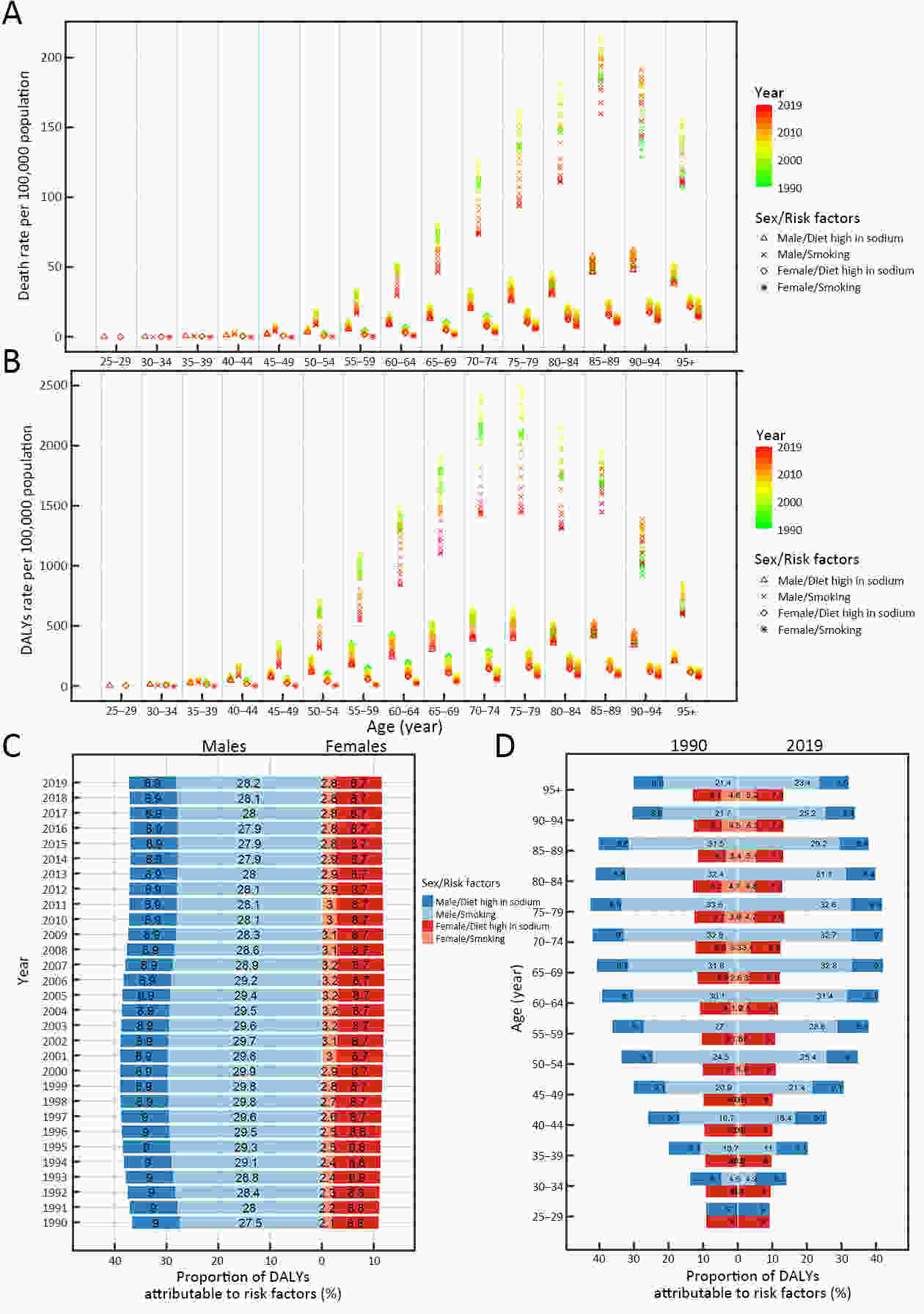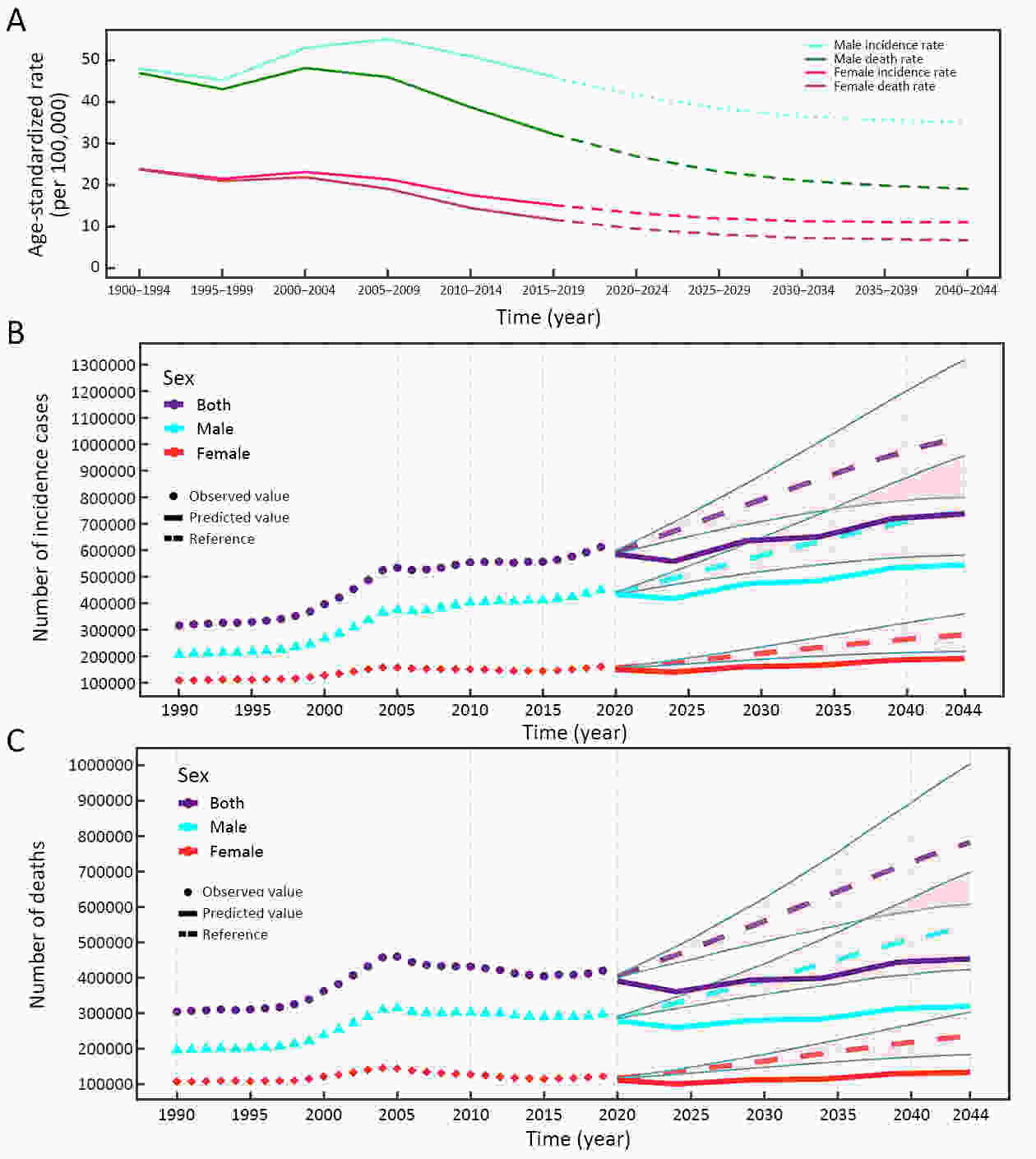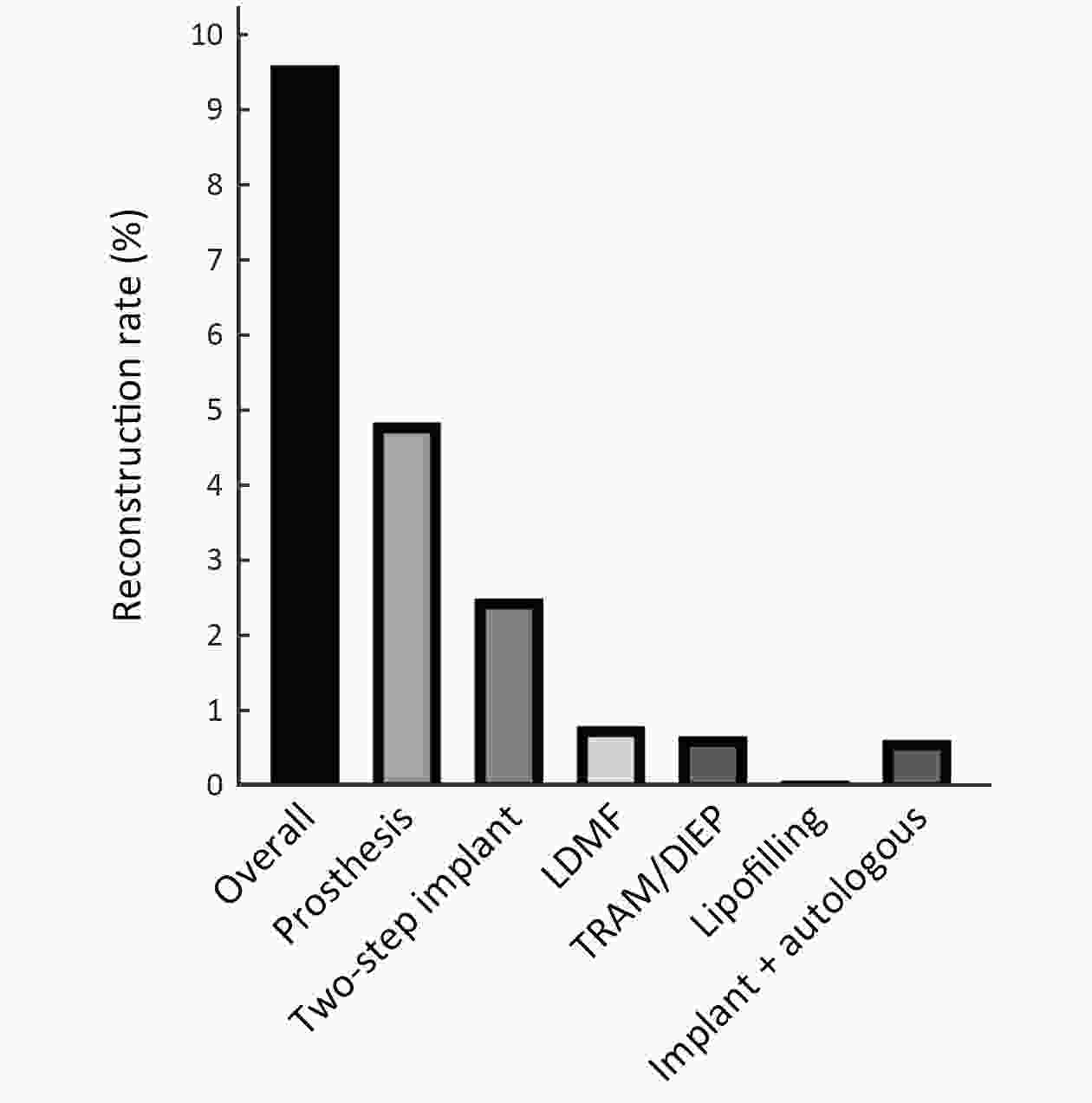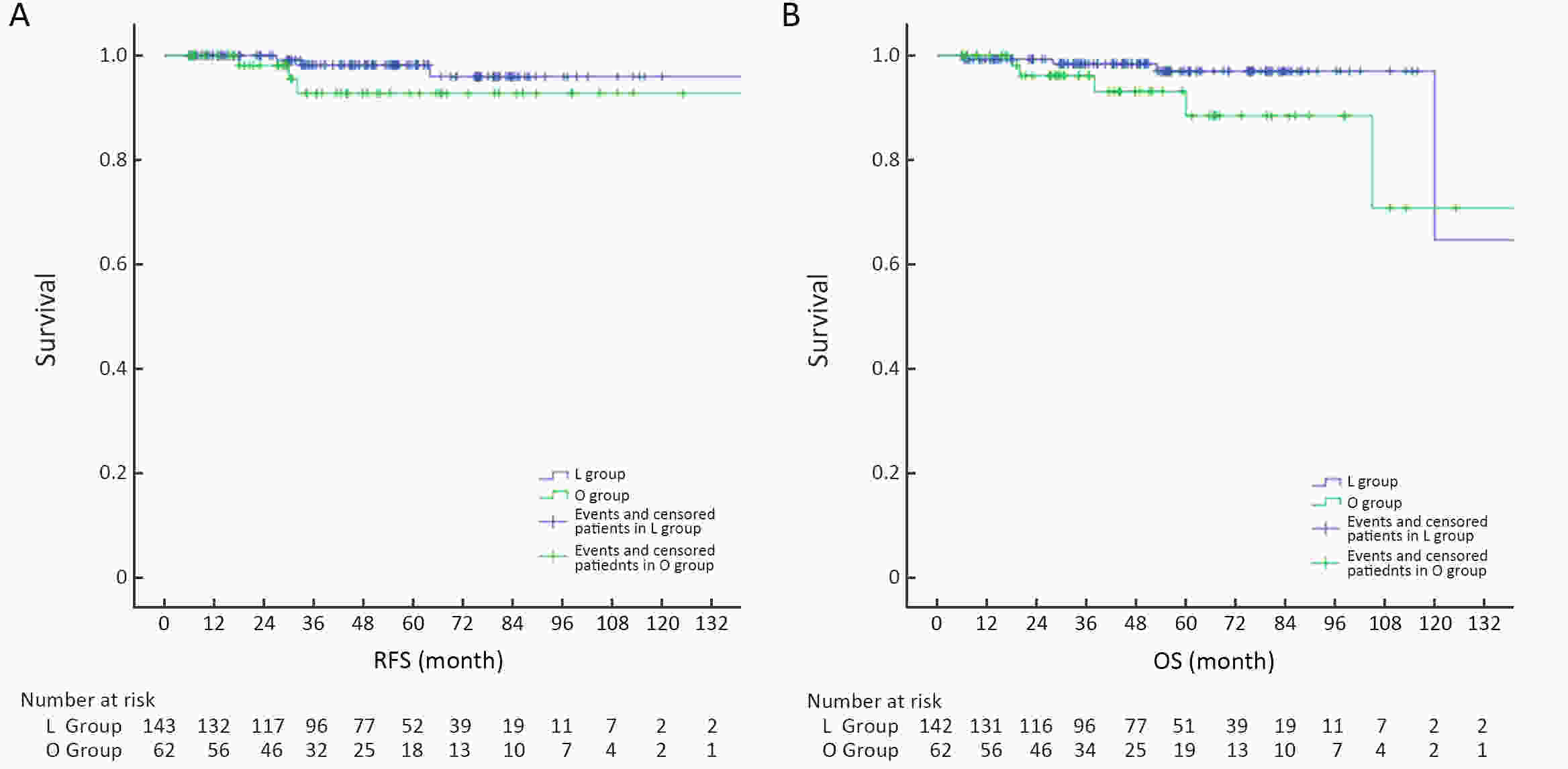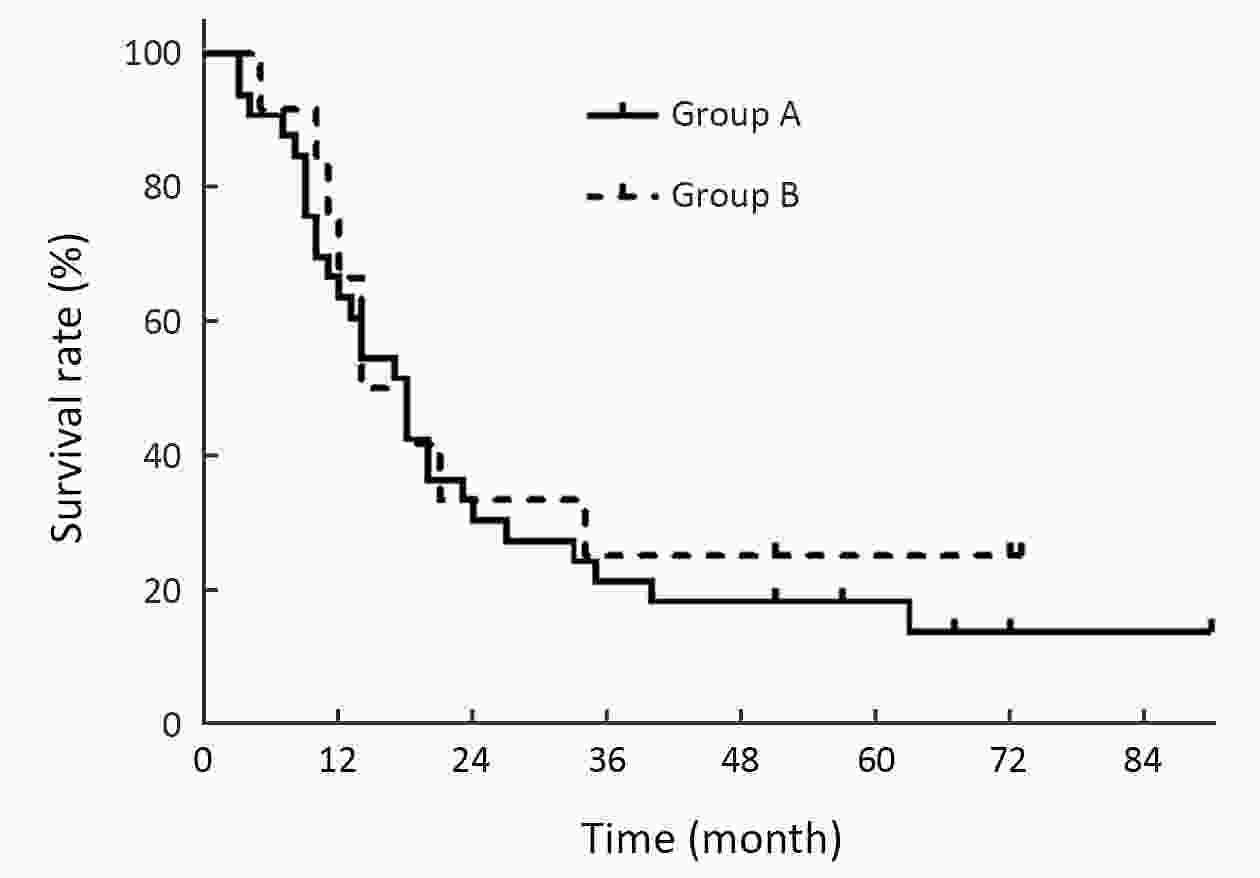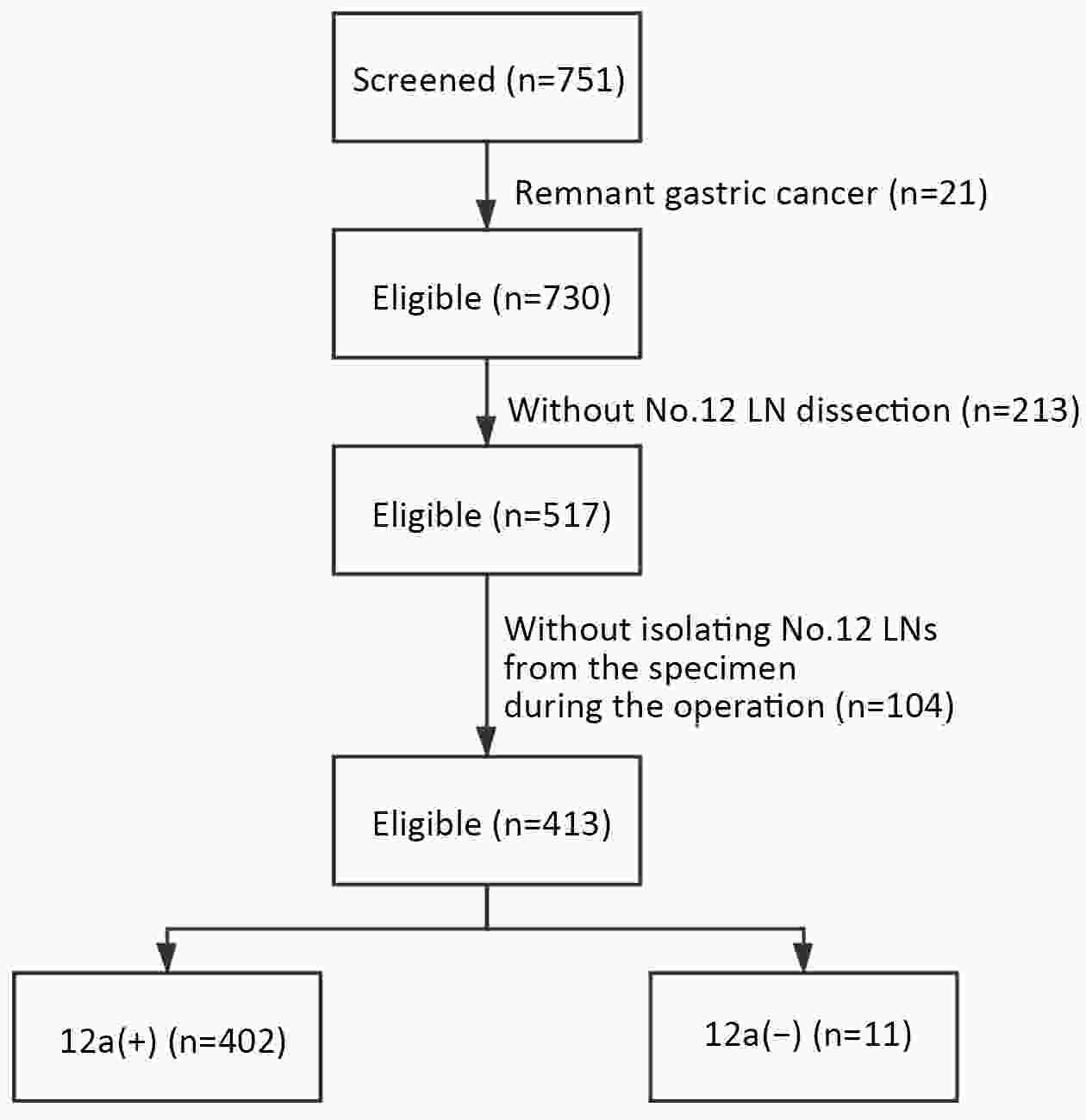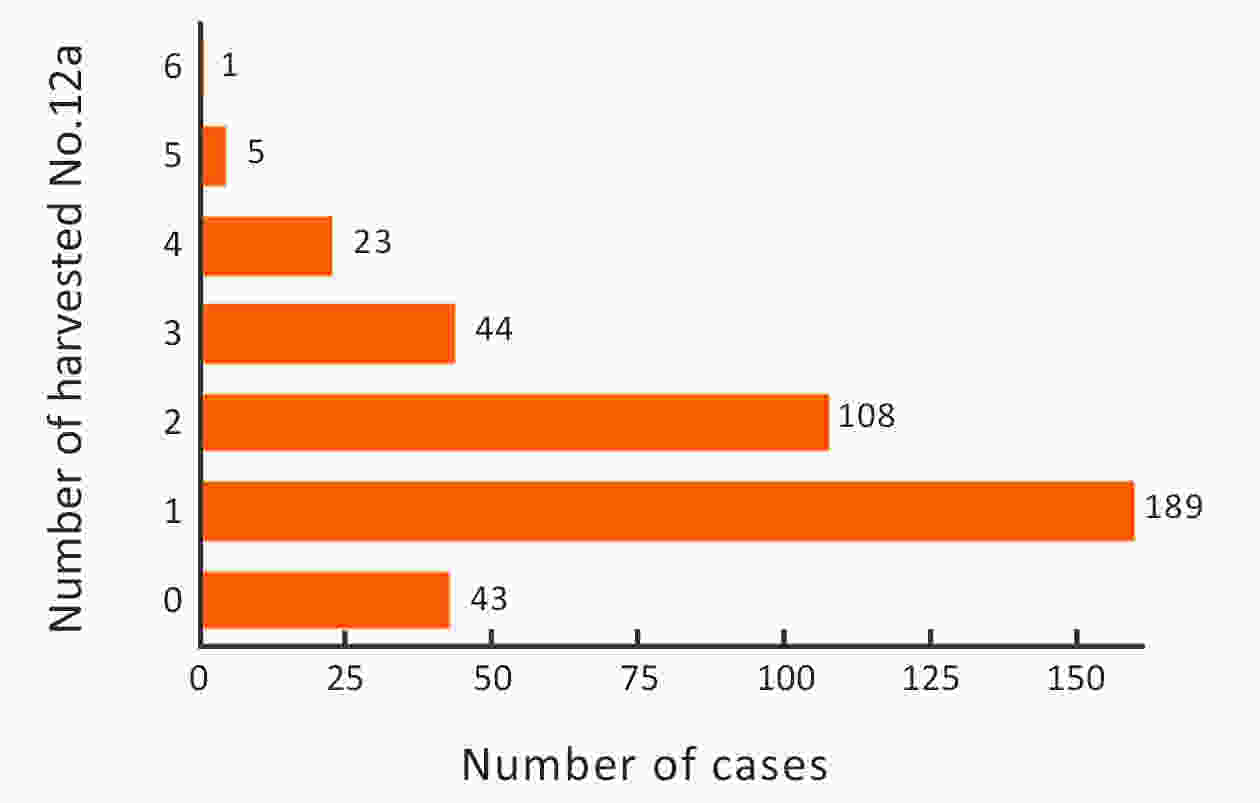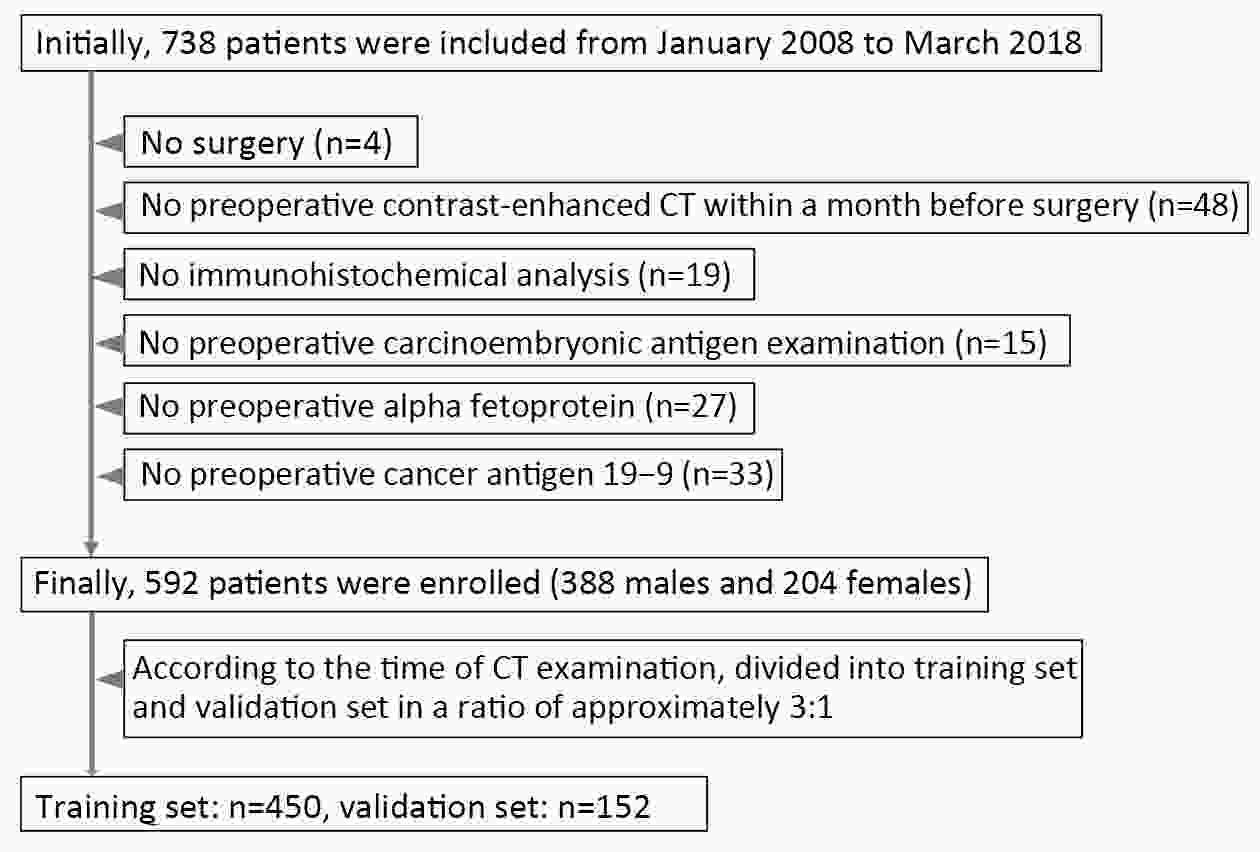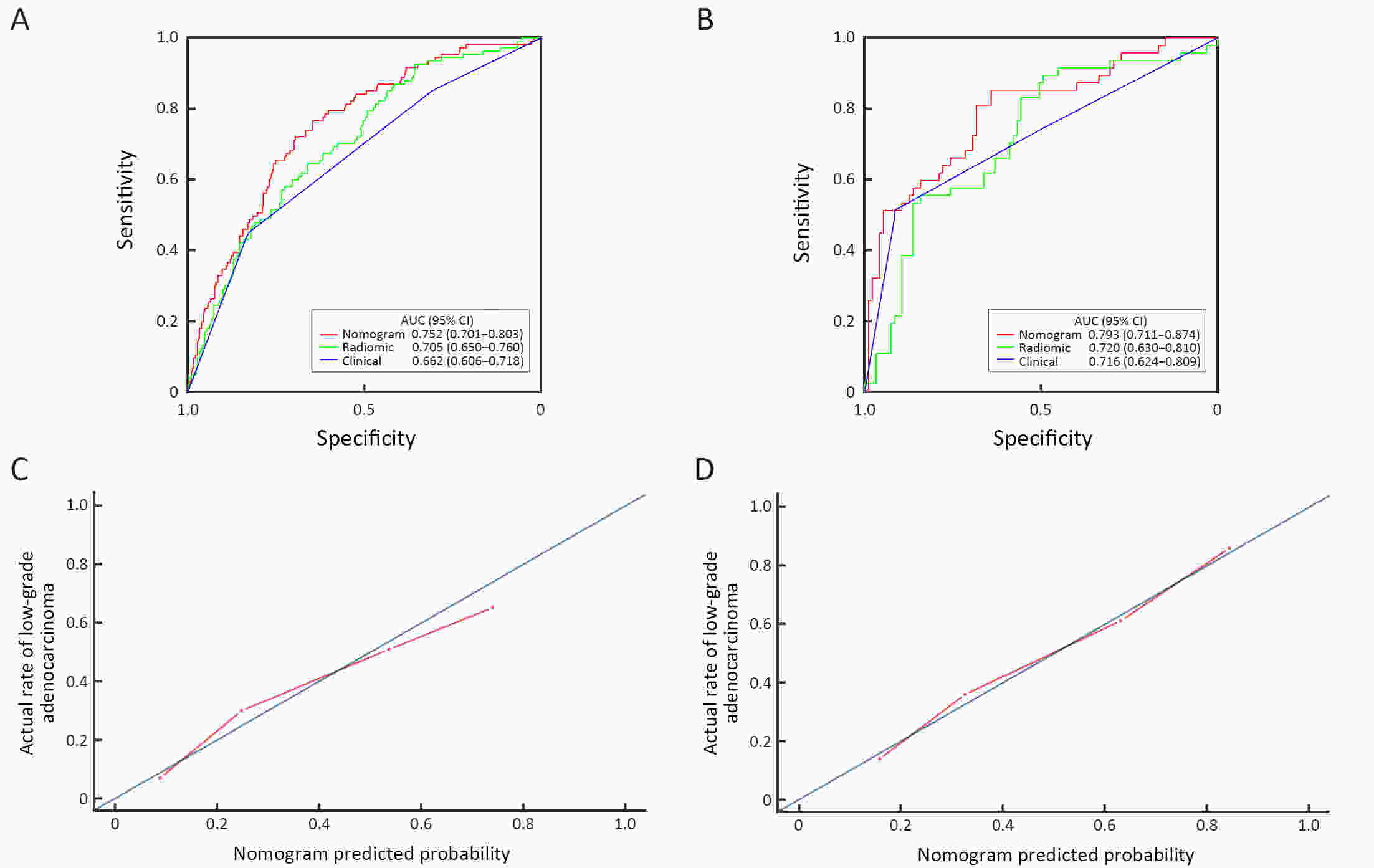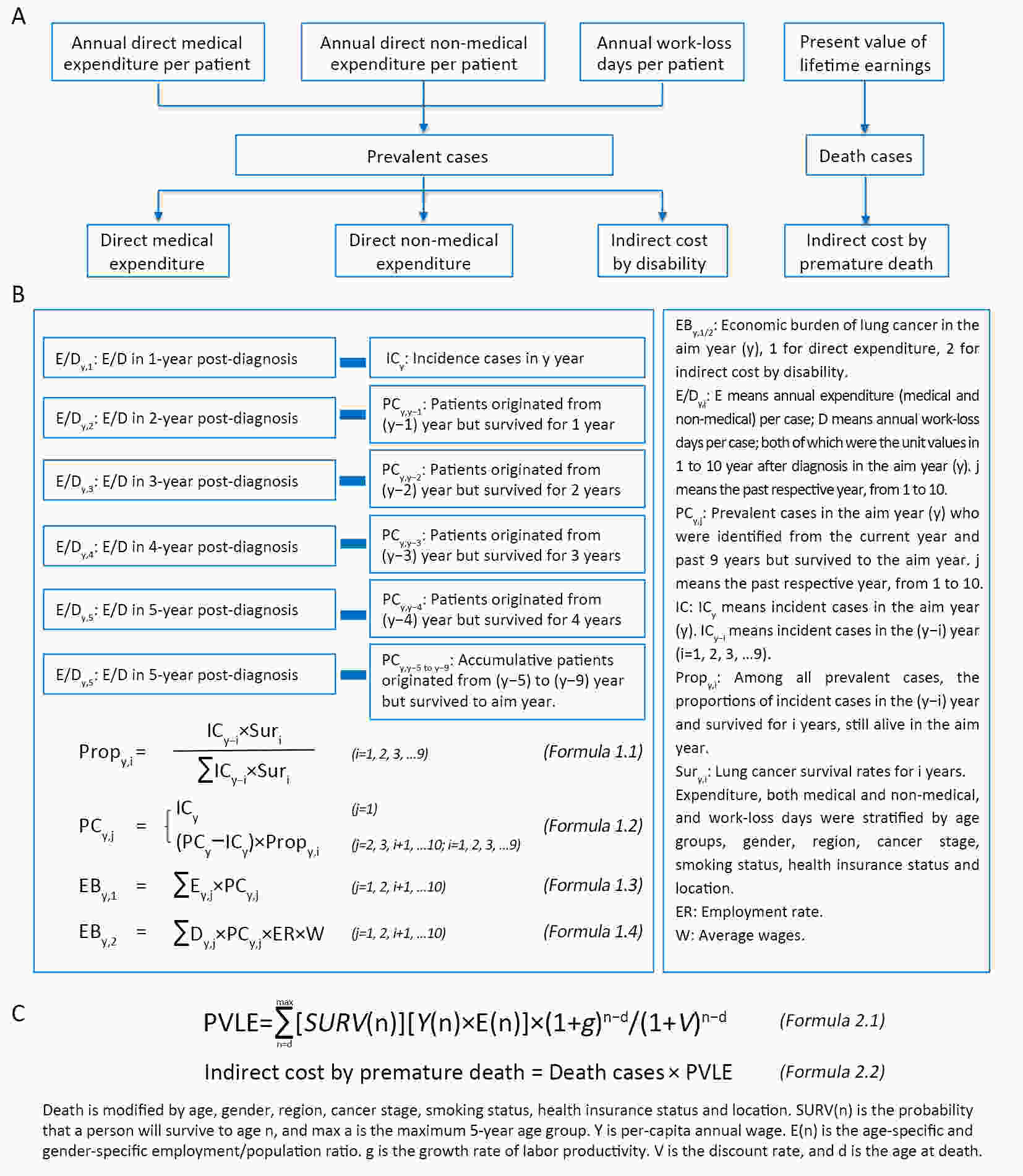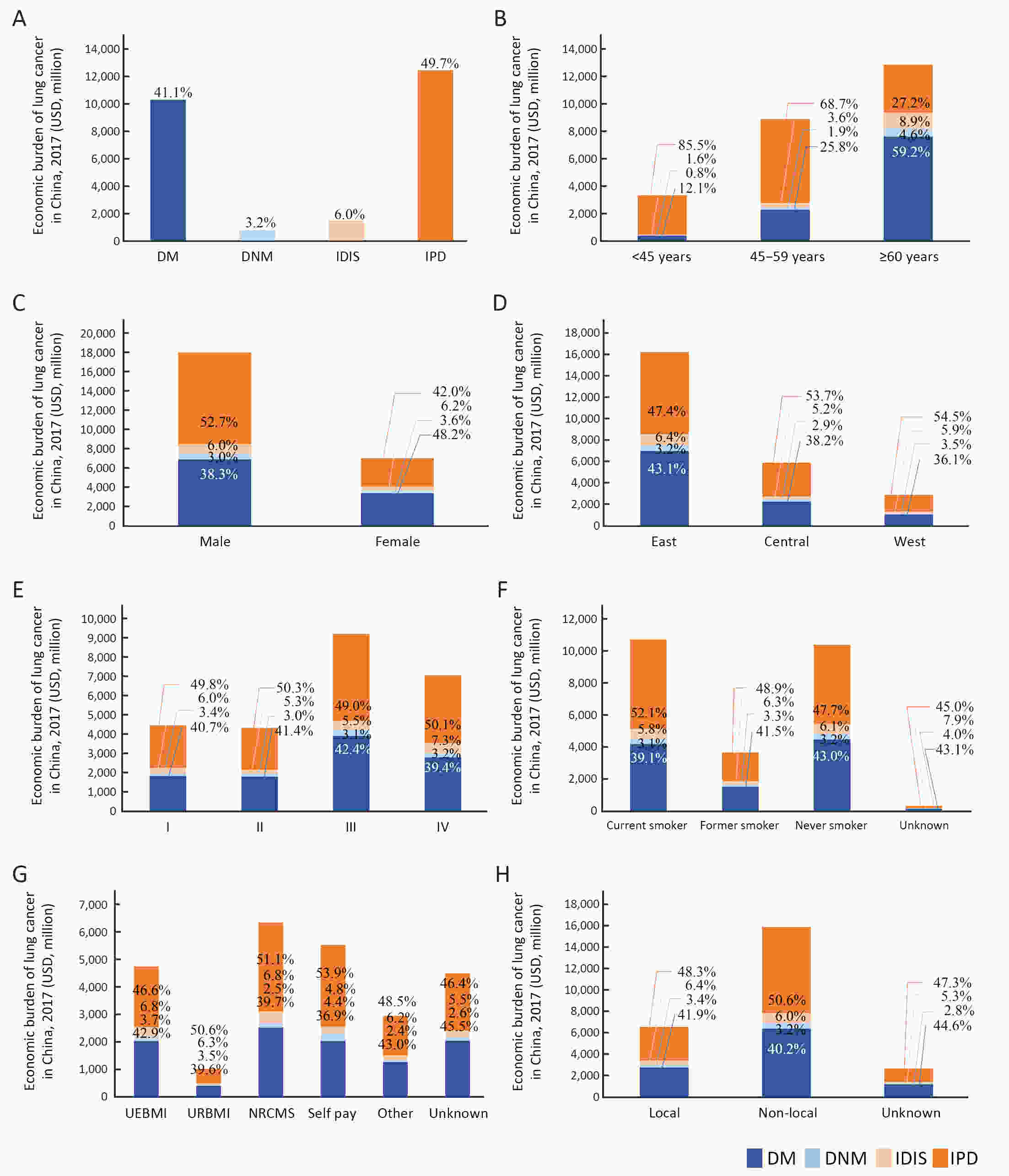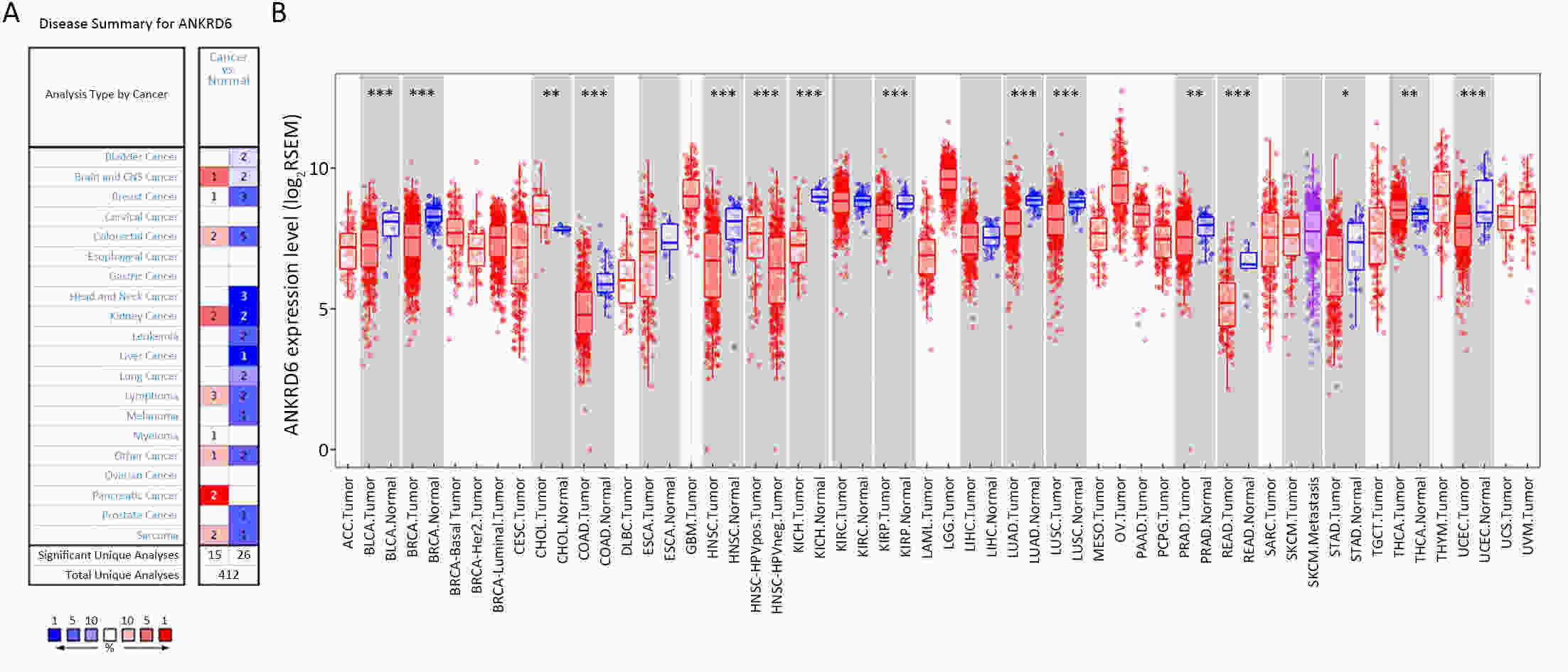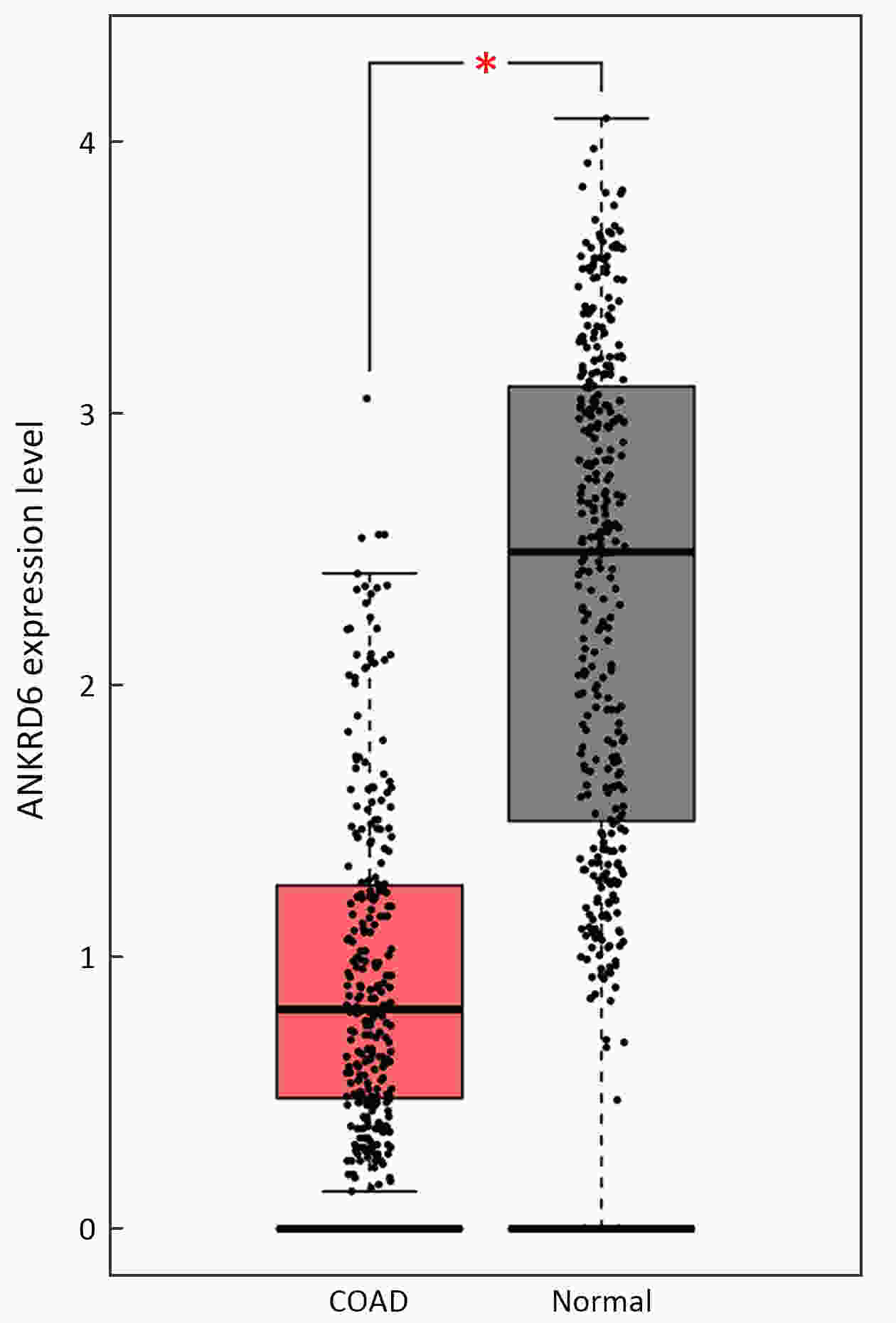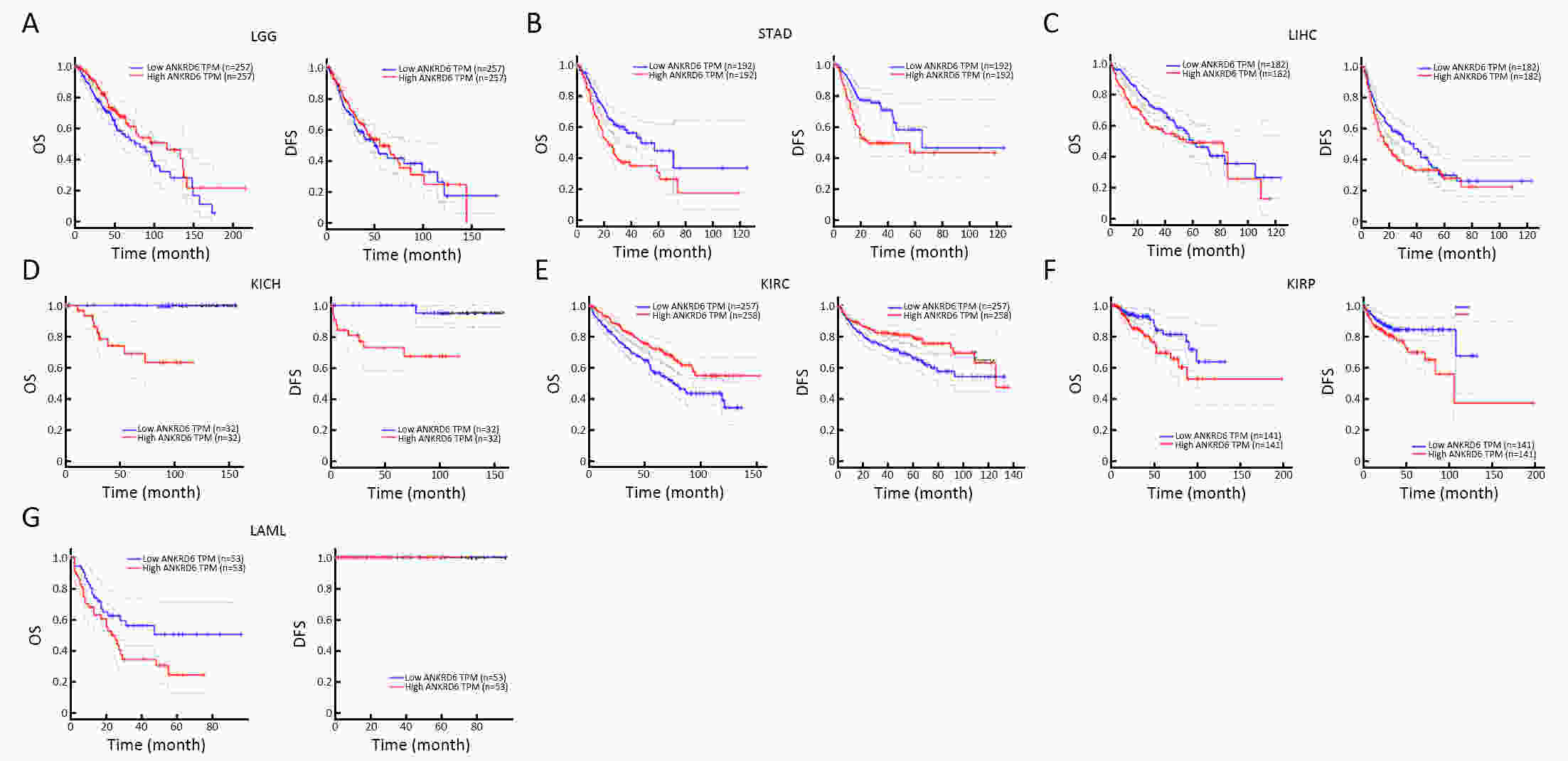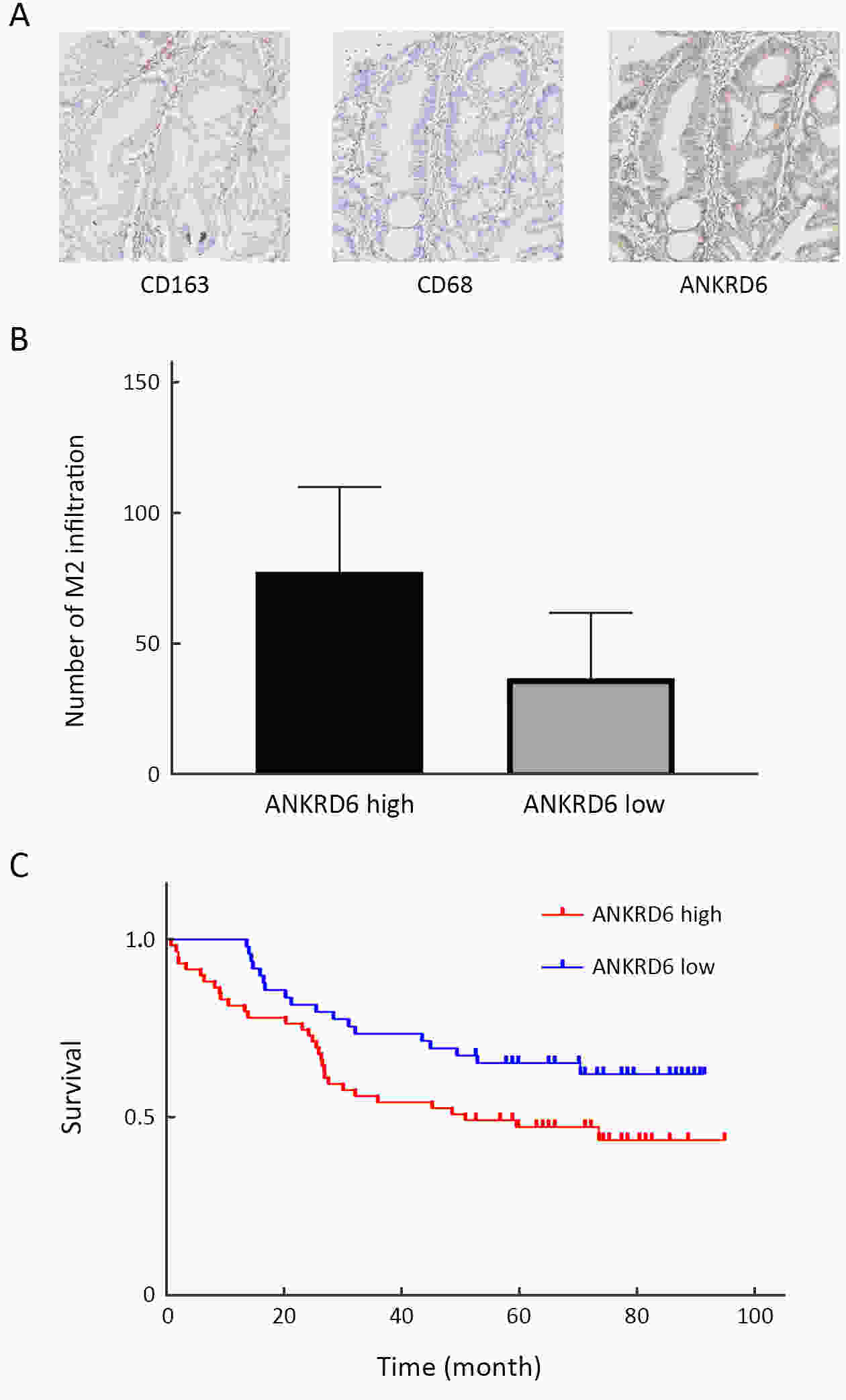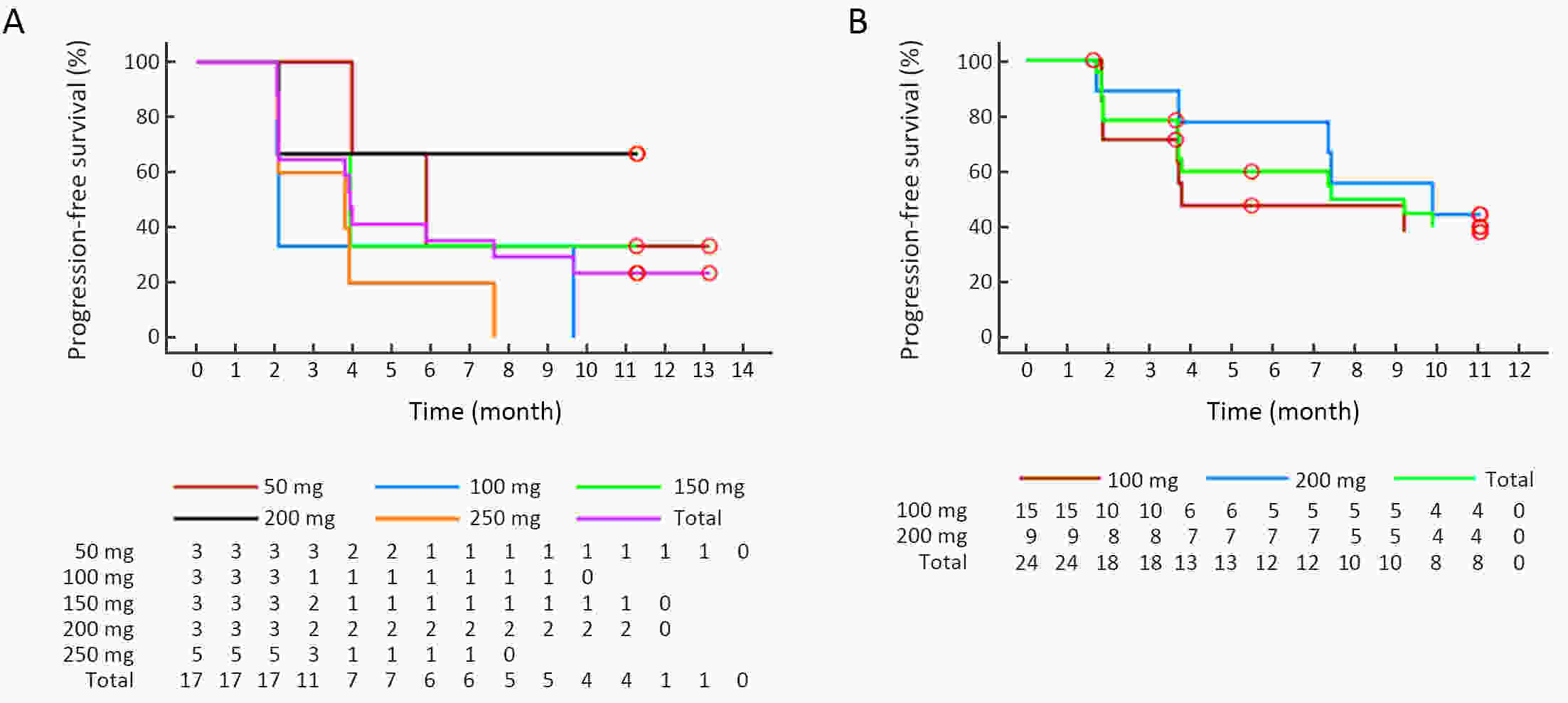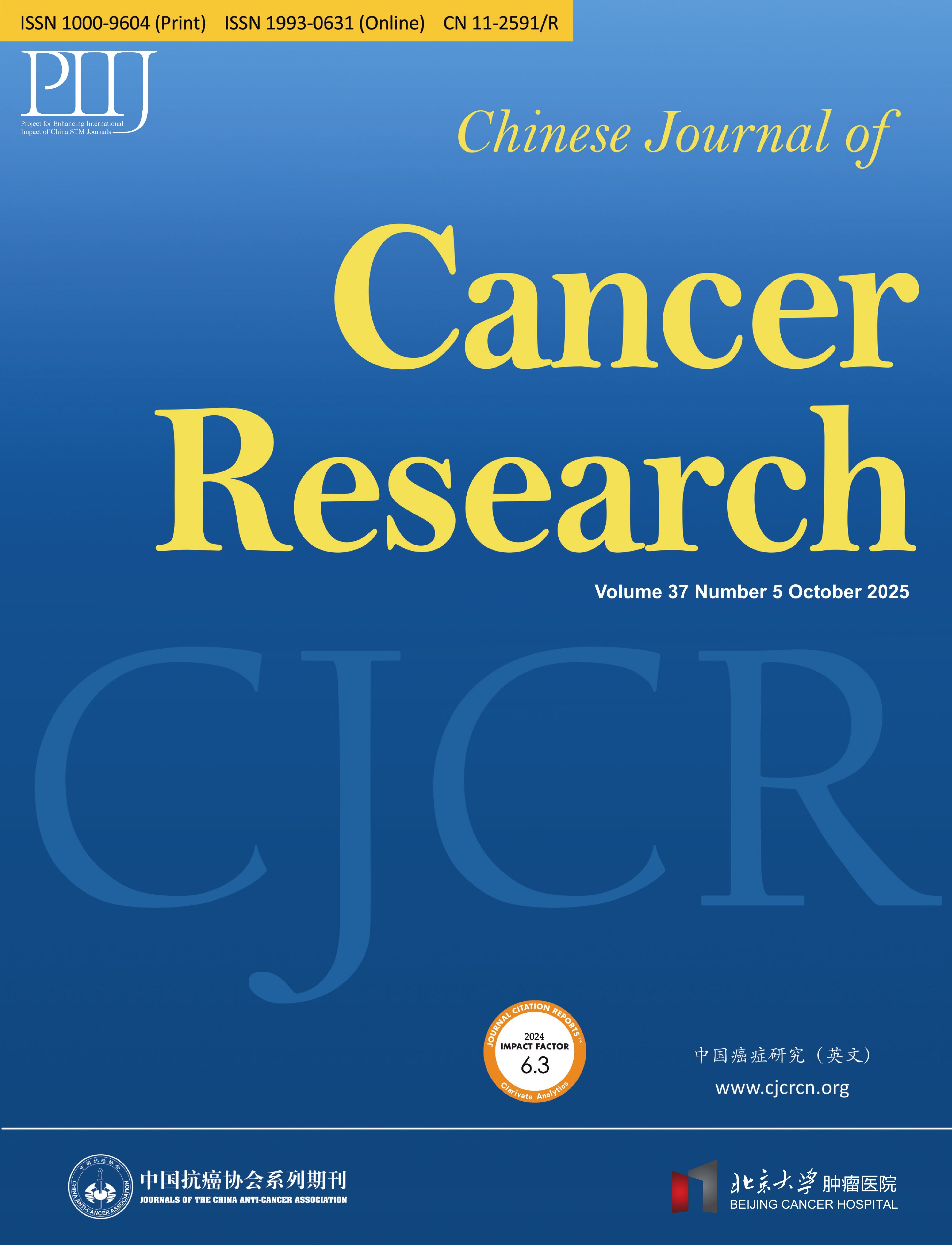2021 Vol.33(1)
Display Mode: |
2021, 33(1): 1-10.
doi: 10.21147/j.issn.1000-9604.2021.01.01
Abstract:
ObjectiveTo summarize the colorectal cancer (CRC) burden and trend in the world, and compare the difference of CRC burden between other countries and China. MethodsIncidence and mortality data were extracted from the GLOBOCAN2018 and Cancer Incidence in Five Continents. Age-specific incidence trend was conducted by Joinpoint analysis and average annual percent changes were calculated. ResultsAbout 1.85 million new cases and 0.88 million deaths were expected in 2018 worldwide, including 0.52 million (28.20%) new cases and 0.25 million (28.11%) deaths in China. Hungary had the highest age-standardized incidence and mortality rates in the world, while for China, the incidence and mortality rates were only half of that. CRC incidence and mortality were highly correlated with human development index (HDI). Unlike the rapid increase in Republic of Korea and the downward trend in Canada and Australia, the age-standardized incidence rates by world standard population in China and Norway were rising gradually. The age-specific incidence rate in the age group of 50−59 years in China was increasing rapidly, while in Republic of Korea and Canada, the fastest growing age group was 30−39 years. ConclusionsThe variations of CRC burden reflect the difference of risk factors, as well as levels of HDI and screening (early detection activities). The burden of CRC in China is high, and the incidence of CRC continues to increase, which may lead to a sustained increase in the burden of CRC in China in the future. Screening should be expanded to control CRC, and focused on young people in China.
2021, 33(1): 11-26.
doi: 10.21147/j.issn.1000-9604.2021.01.02
Abstract:
ObjectiveChina is one of the countries with the heaviest burden of gastric cancer (GC) in the world. Understanding the epidemiological trends and patterns of GC in China can contribute to formulating effective prevention strategies. MethodsThe data on incidence, mortality, and disability-adjusted life-years (DALYs) of GC in China from 1990 to 2019 were obtained from the Global Burden of Disease Study (2019). The estimated annual percentage change (EAPC) was calculated to evaluate the temporal trends of disease burden of GC, and the package Nordpred in the R program was used to perform an age-period-cohort analysis to predict the numbers and rates of incidence and mortality in the next 25 years. ResultsThe number of incident cases of GC increased from 317.34 thousand in 1990 to 612.82 thousand in 2019, while the age-standardized incidence rate (ASIR) of GC decreased from 37.56 per 100,000 in 1990 to 30.64 per 100,000 in 2019, with an EAPC of −0.41 [95% confidence interval (95% CI): −0.77, −0.06]. Pronounced temporal trends in mortality and DALYs of GC were observed. In the next 25 years, the numbers of new GC cases and deaths are expected to increase to 738.79 thousand and 454.80 thousand, respectively, while the rates of incidence and deaths should steadily decrease. The deaths and DALYs attributable to smoking were different for males and females. ConclusionsIn China, despite the fact that the rates of GC have decreased during the past three decades, the numbers of new GC cases and deaths increased, and will continue to increase in the next 25 years. Additional strategies are needed to reduce the burden of GC, such as screening and early detection, novel treatments, and the prevention of risk factors.
2021, 33(1): 27-32.
doi: 10.21147/j.issn.1000-9604.2021.01.03
Abstract:
ObjectiveTo investigate the clinical characteristics and clinicopathological correlations of bilateral breast cancer (BBC) in China. MethodsData of 440 patients diagnosed with BBC in 2018 were collected from 33 centers of the Chinese Society of Breast Surgery. Demographic characteristics, bilateral tumor characteristics, and comprehensive treatment data were obtained. Correlations between the clinicopathological characteristics of bilateral tumors were analyzed. ResultsThe proportion of BBC was 0.22%−3.08%. A total of 33 (7.5%) patients had a family history of malignant tumors, 304 (69.1%) patients had synchronous BBC. Only 1 (0.2%) patient was male. More than half of all patients received concurrent or asynchronous endocrine/chemotherapy, 32.5% of all human epidermal growth factor receptor 2 (HER2)-positive patients received HER2-targeted therapy, and approximately 21.6% of all patients received radiotherapy. The most common pathological cancer type was invasive ductal cancer (>60%). Approximately 70% of all patients had bilateral hormone receptor (HR)-positive tumors and presented with a single breast mass. Significant correlations were found with pathological type, histological grade, locations of tumor, molecular subtype, Ki-67 index, tumor site and size of bilateral tumors. Results of the subgroup analysis showed more clinicopathological characteristics when synchronous BBC was compared with metachronous BBC. ConclusionsIn China, the clinicopathological characteristics of bilateral tumors showed significant correlations, and more significant clinicopathological correlations were observed when synchronous BBC was compared with metachronous BBC.
2021, 33(1): 33-41.
doi: 10.21147/j.issn.1000-9604.2021.01.04
Abstract:
ObjectiveMulti-center data on the current status and trends of breast reconstruction after mastectomy in China are lacking. Herein, we conducted a cross-sectional survey to investigate the current clinical practice pattern of postmastectomy breast reconstruction among Chinese female patients with breast cancer. MethodsA standardized questionnaire used to collect information on breast reconstruction among females diagnosed with breast cancer was distributed by 31 members of the Chinese Society of Breast Surgery between January 1, 2018 and December 31, 2018. Information was collected on tumor characteristics, treatment, mesh application, nipple-areola complex (NAC) preservation, postoperative complications, bilateral reconstruction, patient satisfaction and local recurrence. The overall rate of breast reconstruction was assessed, and the characteristics were compared across patient groups with different reconstruction approaches. ResultsA total of 1,554 patients underwent breast reconstruction after total mastectomy, with a reconstruction rate of 9.6%. Among them, 1,190 were implant-based, and 262 underwent autologous reconstructions, while 102 cases underwent a combination of both. Patients who underwent implant-based reconstruction were younger than those who received autologous reconstruction (40.1±4.6 vs. 45.0±5.9, P=0.004). Compared to patients with autologous reconstruction, mesh application (25.5% vs. 6.5%), NAC preservation (51.8% vs. 40.5%) and reconstruction failure (1.8% vs. 0) were more frequently reported among those with implant-based reconstruction. There was no significant difference in general satisfaction across three reconstruction approaches, though patients with autologous reconstruction reported the highest aesthetic satisfaction among the three groups (P=0.044). ConclusionsImplant-based breast reconstruction remains the dominant choice among patients, while autologous reconstruction was associated with higher aesthetic satisfaction. Our multi-center investigation based on the findings of the tertiary hospitals of Chinese Society of Breast Surgery may guide a future series of clinical studies on breast reconstruction in China.
2021, 33(1): 42-52.
doi: 10.21147/j.issn.1000-9604.2021.01.05
Abstract:
ObjectiveLaparoscopic resection is increasingly performed for gastrointestinal stromal tumors (GISTs). However, the laparoscopic approach for GISTs located in the esophagogastric junction (EGJ-GIST) is surgically challenging. This study compares the efficacy of laparoscopic surgery and the open procedure for EGJ-GIST through the propensity score weighting (PSW) method. MethodsBetween April 2006 and April 2018, 1,824 surgical patients were diagnosed with primary gastric GIST at four medical centers in South China. Of these patients, 228 were identified as EGJ-GISTs and retrospectively reviewed clinicopathological characteristics, operative information, and long-term outcomes. PSW was used to create the balanced cohorts. ResultsPSW was carried out in laparoscopic and open-surgery cohorts according to year of surgery, sex, age, body mass index (BMI), tumor size, mitotic rates and recurrence risk. After PSW, 438 patients consisting of 213 laparoscopic (L group) and 225 open surgery (O group) patients were enrolled. After PSW, the following measures in the L group were superior to those in the O group: median operative time [interquartile range (IQR)]: 100.0 (64.5−141.5) vs. 149.0 (104.0−197.5) min, P<0.001; median blood loss (IQR): 30.0 (10.0−50.0) vs. 50.0 (20.0−100.0) mL, P=0.002; median time to liquid intake (IQR): 3.0 (2.0−4.0) vs. 4.0 (3.0−5.0) d, P<0.001; median hospital stay (IQR): 6.0 (4.0−8.0) vs. 7.0 (5.0−12.0) d, P<0.001; and postoperative complications (10.3% vs. 22.7%, P=0.001). The median follow-up was 55 (range, 2−153) months in the entire cohort. No significant differences were detected in either relapse-free survival (RFS) [hazard ratio (HR): 0.372, 95% confidence interval (95% CI): 0.072−1.910, P=0.236) or overall survival (OS) (HR: 0.400, 95% CI: 0.119−1.343, P=0.138) between the two groups. ConclusionsLaparoscopic surgery for EGJ-GIST is associated with the advantages of shorter operative time, reduced blood loss, shorter time to liquid intake, and shorter length of stay, all without compromising postoperative outcomes and long-term survival.
2021, 33(1): 53-60.
doi: 10.21147/j.issn.1000-9604.2021.01.06
Abstract:
ObjectiveTo investigate the safety and efficacy of nimotuzumab combined with radiotherapy for elderly patients with non-resectable esophageal carcinoma (EC). MethodsEligible patients were aged 70 years or older and had treatment-naïve, histologically proven inoperable locally advanced EC. Enrolled patients received radiotherapy with a total dose of 50−60 Gy in 25−30 fractions, concurrent with weekly infusion of nimotuzumab. The primary end point was the rate of more than grade 3 toxicities. ResultsFrom June 2011 to July 2016, 46 patients with stage II−IV EC with a median age of 76.5 years were enrolled. There were 10, 28 and 8 patients with stage II, III and IV disease, respectively. The common acute toxicities included esophagitis (grade 1−2, 75.4%; grade 3, 8.7%), pneumonitis (grade 1, 4.3%; grade 2, 6.5%; grade 3, 2.2%), leukopenia (grade 1−2, 60.9%; grade 3−4, 4.4%), gastrointestinal reaction (grade 1−2, 17.3%; grade 3, 2.2%), thrombocytopenia (grade 1−2, 21.7%; grade 3, 2.2%), and radiothermitis (grade 1−2, 39.2%). The incidence of grade 3−4 adverse effects was 17.4%. No grade 5 toxicities were observed. Clinical complete response, partial response, stable disease, and progressive disease were observed in 1 (2.2%), 31 (67.4%), 12 (26.1%), and 2 (4.3%) patients, respectively. The median overall survival (OS) and progression-free survival (PFS) were 17 and 10 months, respectively. The 2-, 3-, and 5-year OS and PFS rates were 30.4%, 21.7%, 19.6%, and 26.1%, 19.6%, 19.6%, respectively. ConclusionsNimotuzumab combined with radiotherapy is a safe and effective therapy for elderly patients who are not surgical candidates. Further studies are warranted to confirm its therapeutic effects in elderly EC patients.
2021, 33(1): 61-68.
doi: 10.21147/j.issn.1000-9604.2021.01.07
Abstract:
ObjectiveThe current standard D2 lymphadenectomy for gastric cancer (GC) includes dissection of lymph nodes (LNs) along the proper hepatic artery (No. 12a), however, the survival benefit remains controversial. The purpose of this study was to evaluate the pattern of No. 12a LN metastasis (LNM) in GC and explore the indications for No. 12a LN dissection. MethodsMedical records of 413 consecutive GC patients who underwent curative surgery in Zhongshan Hospital, Fudan University between January 2015 and December 2018 were enrolled and reviewed retrospectively. The correlation between No. 12a LNM and clinicopathologic characteristics of patients was analyzed. ResultsThe overall incidence of No. 12a LNM was 2.67% (11/413). Tumor location (P=0.012), depth of tumor infiltration (P<0.01) and N stage (P=0.018) were significant factors associated with No. 12a LNM. All the tumors with No. 12a LNM involved the lower third of the stomach and were in T3−4 stages. Patients with No. 12a LNM had extensive LNM than those without (20.91±4.25 vs. 5.0±0.54, P<0.001). For advanced GC patients (stage III/IV) with tumors involving the lower third of the stomach, the incidence of No. 12a LNM increased to 10.7% (11/103). Patients with No. 12a LNM had a significantly poorer recurrence-free survival (RFS) (P=0.005) and overall survival (OS) (P=0.017). According to the result of multivariable Cox regression, No. 12a LNM was not an independent impact factor on RFS and OS. ConclusionsThe overall incidence of No. 12a LNM was low but it was much higher in GC patients who had very advanced tumors involving the lower third of the stomach. No. 12a LN dissection should be considered for these patients to improve the survival outcomes.
2021, 33(1): 69-78.
doi: 10.21147/j.issn.1000-9604.2021.01.08
Abstract:
ObjectivesTo develop and validate a radiomics nomogram for preoperative prediction of tumor histologic grade in gastric adenocarcinoma (GA). MethodsThis retrospective study enrolled 592 patients with clinicopathologically confirmed GA (low-grade: n=154; high-grade: n=438) from January 2008 to March 2018 who were divided into training (n=450) and validation (n=142) sets according to the time of computed tomography (CT) examination. Radiomic features were extracted from the portal venous phase CT images. The Mann-Whitney U test and the least absolute shrinkage and selection operator (LASSO) regression model were used for feature selection, data dimension reduction and radiomics signature construction. Multivariable logistic regression analysis was applied to develop the prediction model. The radiomics signature and independent clinicopathologic risk factors were incorporated and presented as a radiomics nomogram. The performance of the nomogram was assessed with respect to its calibration and discrimination. ResultsA radiomics signature containing 12 selected features was significantly associated with the histologic grade of GA (P<0.001 for both training and validation sets). A nomogram including the radiomics signature and tumor location as predictors was developed. The model showed both good calibration and good discrimination, in which C-index in the training set, 0.752 [95% confidence interval (95% CI): 0.701−0.803]; C-index in the validation set, 0.793 (95% CI: 0.711−0.874). ConclusionsThis study developed a radiomics nomogram that incorporates tumor location and radiomics signatures, which can be useful in facilitating preoperative individualized prediction of histologic grade of GA.
2021, 33(1): 79-92.
doi: 10.21147/j.issn.1000-9604.2021.01.09
Abstract:
ObjectivePopulation-level economic burden is essential for prioritizing healthcare resources and healthcare budget making in the future. However, little is known about the economic burden of lung cancer in China. MethodsA prevalence-based approach was adopted to estimate the economic burden of lung cancer, including direct expenditure (medical and non-medical) and indirect cost (disability and premature death). Data on direct expenditure and work-loss days per patient in each year post-diagnosis were obtained from two primary surveys. Other parameters were obtained from literatures and official reports. Projections were conducted based on varying parameters. All expenditure data were reported in United States dollars (USD) using 2017 value (exchange rate: 1 USD= 6.760 CNY), with the discount rate of 3%. ResultsThe total economic burden of lung cancer was estimated to be 25,069 million USD in China in 2017 (0.121% of gross domestic productivity, GDP). The estimated direct expenditure was 11,098 million USD, up to 1.43% of total healthcare expenditure for China, covering 10,303 million USD and 795 million USD for medical and non-medical expenditure, respectively. The estimated indirect cost was 13,971 million, including 1,517 million USD due to disability and 12,454 million USD due to premature death. Under current assumptions, the projected total economic burden would increase to 30.1 billion USD, 40.4 billion USD, and 53.4 billion USD in 2020, 2025, and 2030, accounting for 0.121%, 0.131%, and 0.146% of China’s GDP, respectively. However, if China meets the United Nation sustainable development goal of reducing premature death from non-communicable diseases by one-third by 2030, the total economic burden in 2030 would be 31.9 billion USD, 0.087% of China’s GDP. ConclusionsThe economic burden of lung cancer in China in 2017 is substantial and more likely to increase significantly in the future. Policy makers need to take urgent actions in budget making for health systems. The economic burden could be alleviated by reducing the disease burden of lung cancer via effective control and prevention actions.
2021, 33(1): 93-102.
doi: 10.21147/j.issn.1000-9604.2021.01.10
Abstract:
ObjectiveAnkyrin repeat domain-containing protein 6 (ANKRD6) is an ankyrin repeat-containing protein which is structurally related to vertebrate inversin and Drosophila Diego. However, the correlations between ANKRD6 and tumor-infiltrating immune cells in cancers is not clear. MethodsANKRD6 expression was analyzed by Oncomine, Tumor Immune Estimation Resource (TIMER) and Gene Expression Profiling Interactive Analysis (GEPIA). PrognoScan and GEPIA were used to evaluate the influence of ANKRD6 on clinical prognosis. TIMER and CIBERSORT were used to analyze correlations between ANKRD6 expression levels and tumor immune cell infiltrates. Immunohistochemical analysis of the relationship between ANKRD6 expression and overall survival, as well as the relationship between ANKRD6 expression and M2 macrophage infiltration, was performed. ResultsHigh level of ANKRD6 expression was associated with poor prognosis of colon cancer. ANKRD6 expression level was positively correlated with infiltrating levels of CD8+ T cells, CD4+ T cells, macrophages, neutrophils and dendritic cells in colon cancer by using TIMER. Using CIBERSORT, we found that in plasma cells, CD8+ T cells, CD4+ memory resting T cells, follicular helper T cells and activated natural killer cells were significantly lower in the ANKRD6-high group than in the ANKRD6-low group. M0 and M2 macrophages were significantly higher in the ANKRD6-high group than in the ANKRD6-low group. Immunohistochemistry confirmed that M2 macrophage infiltration in the ANKRD6-high group significantly increased. ConclusionsThe high ANKRD6 expression is associated with poor prognosis of colon cancer. ANKRD6 expression is positively correlated with M2 macrophage infiltration in colon cancer.
2021, 33(1): 103-114.
doi: 10.21147/j.issn.1000-9604.2021.01.11
Abstract:
ObjectiveThis study evaluated the safety and preliminary efficacy of vorolanib, a novel tyrosine kinase inhibitor, for treatment of patients with advanced solid tumors. MethodsDuring dose escalation, patients received increasing doses of oral vorolanib (50−250 mg once daily) in cycles of four weeks for up to one year. During dose expansion, patients received recommended doses (100 and 200 mg) in 4-week cycles. The primary endpoint was to determine the safety and maximum tolerated dose and/or the recommended phase II dose (RP2D). The severity and type of adverse drug reactions (ADRs) were assessed using the Common Terminology Criteria for Adverse Events version 4.0. The second endpoint was preliminary efficacy in terms of objective response and progression-free survival (PFS). ResultsNo dose-limiting toxicity occurred during dose escalation (50−250 mg). Five (26.3%) patients in the escalation cohort (n=19) and 12 (48.0%) in the expansion cohort (n=25) experienced grade 3 ADRs. The most common ADRs were hair color changes, fatigue, portal hypertension, hypertriglyceridemia, and proteinuria. During dose expansion, the patients treated with 200 mg and 100 mg (once daily) showed an objective response rate of 22.2% and 5.9%, respectively; the disease control rate was 88.9% and 73.3%, respectively; the median PFS was 9.9 [95% confidence interval (95% CI): 7.4−not reached] months and 3.8 (95% CI: 1.9−not reached) months, respectively. ConclusionsOral vorolanib at a dose of 200 mg (once daily) exhibited an acceptable safety profile and favorable clinical benefit for patients with advanced solid tumors. The RP2D for vorolanib was determined to be 200 mg as a daily regimen.
2021, 33(1): 115-132.
doi: 10.21147/j.issn.1000-9604.2021.01.12
Abstract:
Secretory proteins in tumor tissues are important components of the tumor microenvironment. Secretory proteins act on tumor cells or stromal cells or mediate interactions between tumor cells and stromal cells, thereby affecting tumor progression and clinical treatment efficacy. In this paper, recent research advances in secretory proteins in malignant tumors are reviewed.
Secretory proteins in tumor tissues are important components of the tumor microenvironment. Secretory proteins act on tumor cells or stromal cells or mediate interactions between tumor cells and stromal cells, thereby affecting tumor progression and clinical treatment efficacy. In this paper, recent research advances in secretory proteins in malignant tumors are reviewed.

 Abstract
Abstract FullText HTML
FullText HTML PDF 7987KB
PDF 7987KB